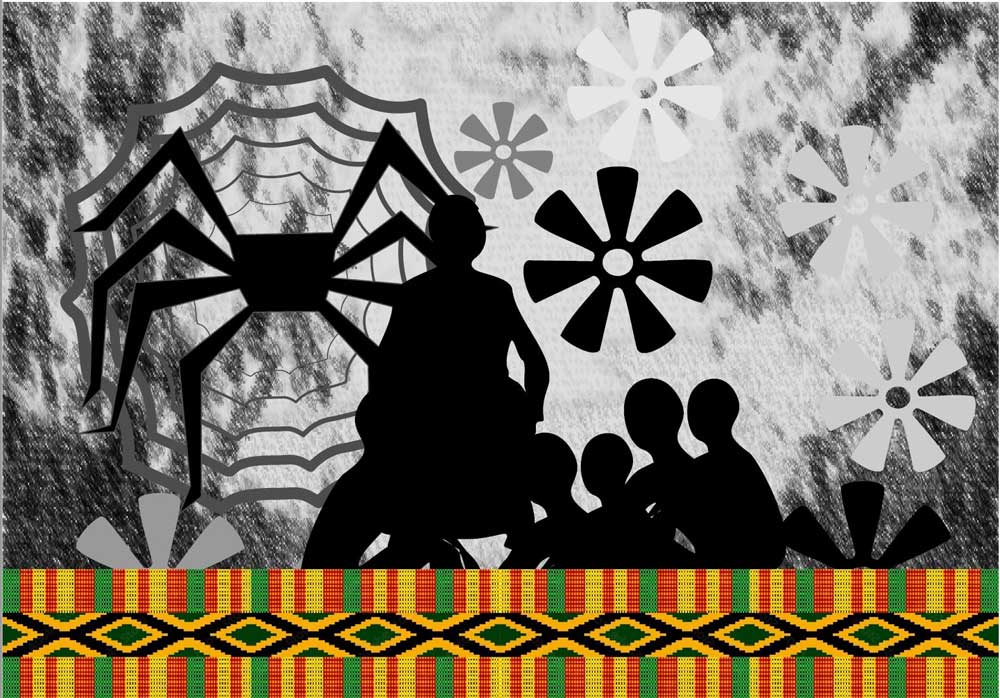Curated by Ebenezer Acquah

Introduction
In Ghana, storytelling is an integral pastime and artistic practice in families and communities, though in recent times, it has experienced less attention due to globalization and occupational demands. It is a recognized art form which provides a convenient way to initiate and share principles, ideas, opinions or concrete information about societies and communities. For centuries, key forebears especially the elderly people have handed down history, customs, beliefs and codes of behavioral practices to their lineage through storytelling in Ghana. The stories are also captured in visual culture as they present narratives about events, beliefs, practices, and sometimes fantasies.
Knowledge and specific values are transmitted through storytelling and these are educational, historical, or spiritual. The stories teach values such as hospitality, honour, respect, communality, sacredness, gratitude, and morality. However, the question of gender roles in the storytelling generates public debates on the need for equality among the general populace.
People may conceptualize gender on different levels, which covers cultural beliefs, the distribution of resources, patterns of behaviour at the interactional level, and roles and identities at different level. It could be a system of social practices that helps define the masculine and feminine as different in socially relevant ways. Additionally, gender is culturally constructed and exhibited through interactions between people, in mass media, and by popular discussions. However, the potential of gender structure as a system that tends to reinforce inequality society raises questions for social and academic discourse, and within art education in Ghana.
The notion of gender in art education has the potential of shaping artistic practices and open avenues to explore the world in diverse environments. The socio-cultural environment in Ghana is made up of communities and associations from which individual and collective experiences eventually combine into habits and culture. These experiences are manifested in the 21st century popular and visual cultures using materials and sometimes, unconventional objects. The art education practices are shaped by culture: influenced by language, beliefs, and values. The unique features that is described as individuality and collectivity, as well as aptitudes relevant in art making and art education moderate the visual cultural landscape through artistic practices in Ghana.
Diverse forms of artistic practices in Ghana provides an opportunity for people to explore the visual cultural landscape with emphasis on the uniqueness of the art forms through storytelling. One is welcomed to appreciate visual culture that presents cultural practices, gender and social protection, environmental sustainability, natural landscape, and social cohesion. These thematic areas, in part, are presented through the virtual exhibition from the School of Creative Arts, University of Education, Winneba – Ghana.















